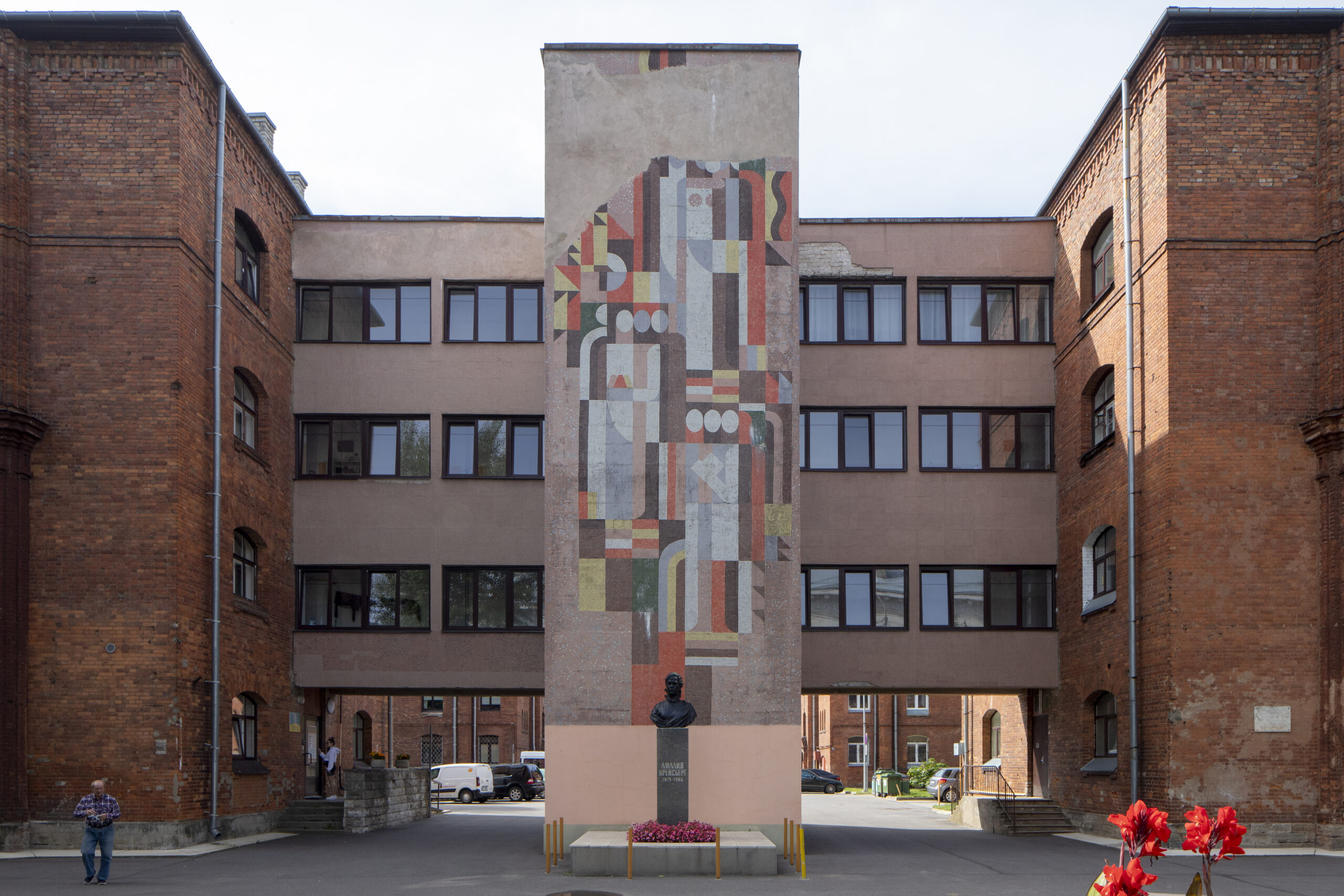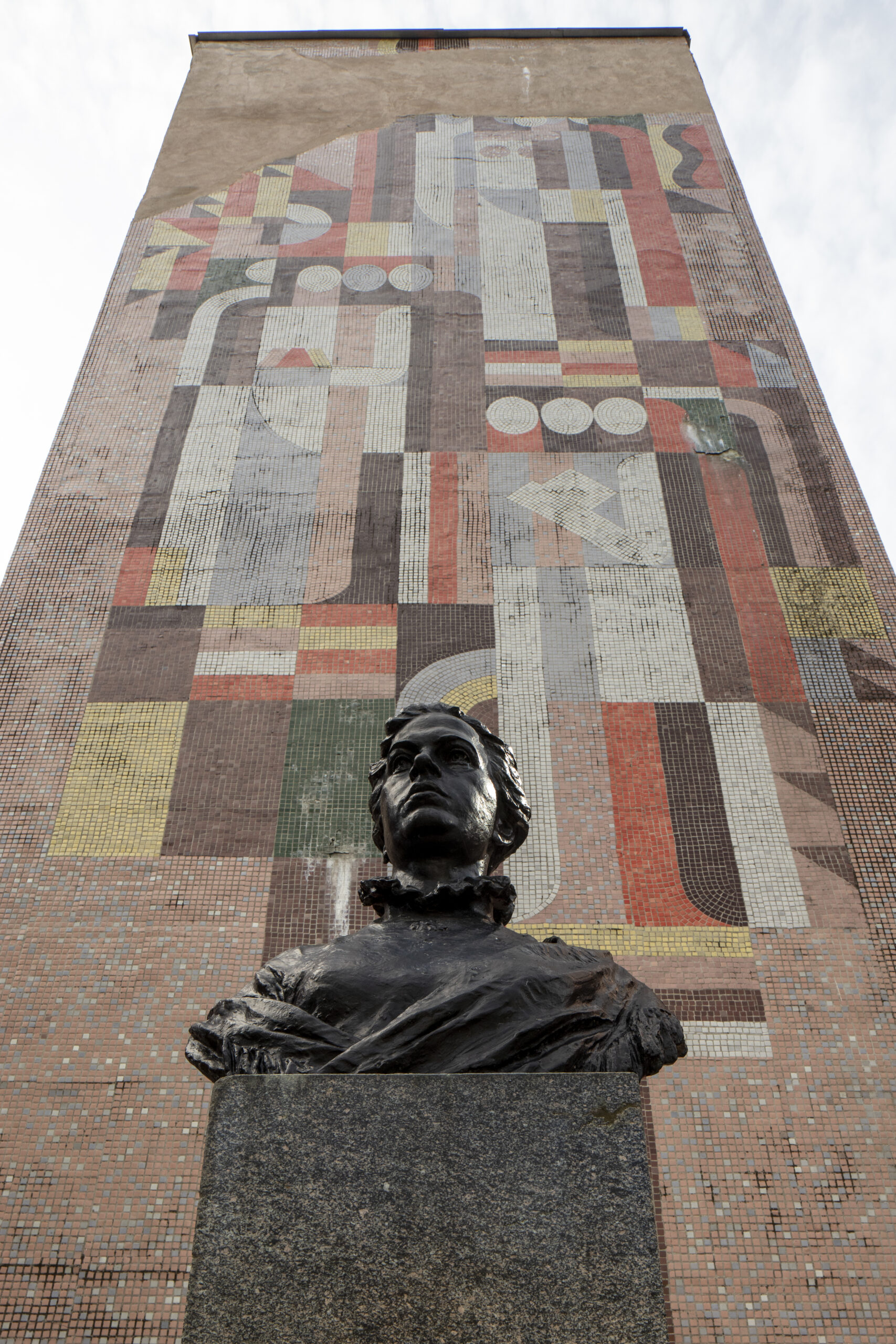Mosaic Pannel on the Intermediate Structure of the Kreenholm Workers’ Barracks
Year of completion: 1982
Address: Ida-Viru County, Narva, Joala 10/12
Authors Jevgeni Olenin and Eduard Pašover
Ceramics
Residential buildings Joala 10 (no. 14 013) and Joala 12 (no. 14 014) are architectural monuments
The Kreenholm textile manufacturing company founded in the 19th century quickly became one of the largest textile companies in the Baltic Sea region. Initially, there were no specialists in the region, which led to the employment of 300 skilled labourers from Germany and England. Lofty residential buildings were built to house them, the historicist style of which was inspired by the brick architecture of Great Britain’s industrial cities. Residential buildings were also constructed for other labourers, as well as a school, sauna, stores, both Lutheran and Russian Orthodox churches, indoor marketplace, fire station, hospital complex and a clubhouse. Miraculously, many of these buildings survived the bombings of the Second World War, which were fateful for the rest of the town.
During the Soviet Era, the textile industry here became even more powerful, causing the historical borough to be further densified with multiple buildings. The lofty attics of Joala 10 and 12 were soon taken into use as lodgings, and the two buildings were connected in the 1970s with an intermediate structure. The intermediate structure was covered with a geometric mosaic pannel, and although it is strictly speaking an abstract artwork, one can recognise the image of textile workers bustling about between fabrics. The authors of the pannel were likely artists Jevgeni Olenin and Eduard Pašover from Odessa. Creating mosaic pannels flourished in Ukraine, where it was supported by thorough education and versatile production output from glass- and ceramics factories.
At the same time, the pannel serves as a background for the monument of revolutionary Amalia-Elisabet Kreisberg. The local girl who died as a martyr to labourers’ rights stands almost symbolically in front of her companions. In 1904, 25-year-old Kreisberg was elected head of workers in Kreenholm. Her duty was to represent the labourers’ interests in negotiations with administration. The fearless young lady was popular among colleagues and boldly led the 1905 strike until she was arrested. She died in prison on the 29th of April, in 1906.
Olenin and Pašover also created a mosaic pannel for the façade of an administrative building completed in the 1970s next to the Joala factory. The piece depicted workers bustling about, surrounded by threads. A few years ago, it was decided that less valuable Soviet Era additions should be removed from the surroundings of the two historical factory buildings. As a result, the pannel depicting the ambitious “moiras” of Kreenholm was lost to history as well. The piece on the intermediate structure of Joala 10/12 is in a decent state with almost a fifth having deteriorated, but being relatively easy to restore. Joala 10 and 12 are under conservation as architectural monuments. Only time can tell whether or not the intermediate structure with a seemingly separate identity will survive with the pannel.
Gregor Taul








